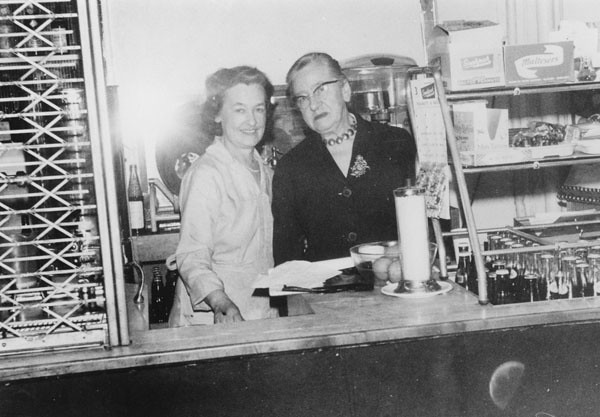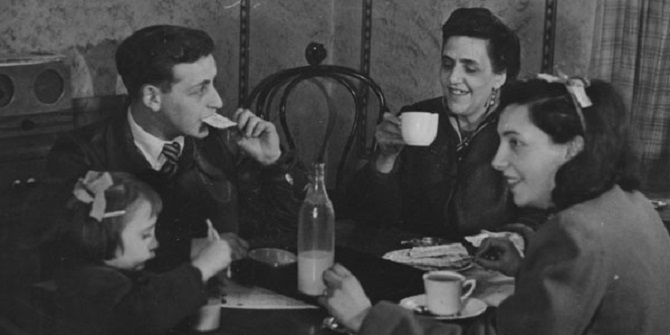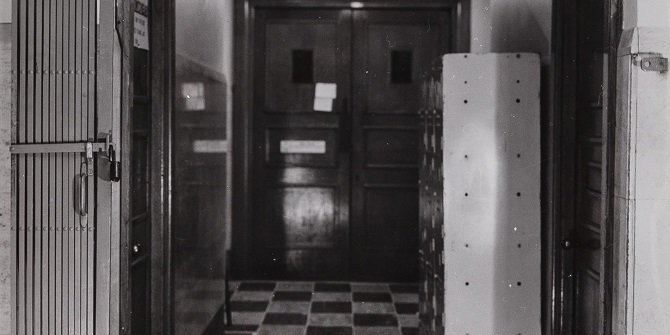Mhairi Gowans revisits a classic recipe from the LSE Refectory in the 1960s – Mrs Ellis’s rock cakes.
As an avid baker I had long been intrigued to try out this recipe. It’s from another LSE History blog post by an LSE alumnus about the 1960’s LSE Refectory and in particular the rock cakes made by the manager, Mrs Ellis.
 Refectory Staff, c1970. Left: Mrs Ethel Gladding, Mrs Ellis (refectory manager). Picture from Mrs Gladding. IMAGELIBRARY/337. LSE
Refectory Staff, c1970. Left: Mrs Ethel Gladding, Mrs Ellis (refectory manager). Picture from Mrs Gladding. IMAGELIBRARY/337. LSE
I decided this month was the month and got the ingredients to make these rock cakes at last. The original recipe calls for lard, which I decided not to use as I wanted them to be vegetarian friendly. For my lard replacement I selected Crisp and Dry. I also currently do not have measuring scales at home, so I needed to convert all my measurements to American cups – which I did with the help of this online calculator.
There were moments when I felt like I was in my own Bake Off Technical challenge – the recipe didn’t specify whether I needed plain or self-raising flour – it just said “flour”. But it also didn’t include a raising agent. I decided to go with self-raising flour, and I think that was the right thing to do – certainly other rock cake recipes use raising agents.
The recipe also did not specify an egg wash at the end. In the first batch in the oven, I did three with an egg wash and three without. There wasn’t a substantial difference, but the ones with egg wash looked nicer as they had a nice golden sheen. Ultimately I did the rest with an egg wash as a result.
The Recipe
1) Cream butter, margarine and lard/lard alternative together. (I used an electric whisk on a low setting)
2) Add milk and eggs.
3) Slowly add the dry ingredients (flour, spices, fruit). I continued to use my whisk for this. I tried folding but it was difficult to get the flour properly mixed in that way.
4) Once you have incorporated all the dry ingredients you will have what is quite a stiff dough. Form them into balls (the size of a small fist as the original instructions say). Flour your hands if you want to avoid everything sticking.
5) Line a baking tray with baking paper (or grease the bottom if you don’t have any), place your balls of dough on the tray and place in the oven. I did 6 at a time. The recipe called for 15 minutes in the oven – in my fan oven I found I needed something closer to 20 minutes for them to cook the whole way through.
6) Cool on a wire rack. You can eat while still warm or have them cold. They will also be nice treated like scone – split in half with some butter and jam!
Here’s my rock cake journey in pictures. The recipe makes 12 – if you only see 11, it’s because I ate one!
And the verdict?
They are delicious and very comforting - with the spices and orange peel they feel very Christmassy! Great with a cup of tea.
Sophie Cope, Alumni Engagement and Volunteering Manager, PAGE





